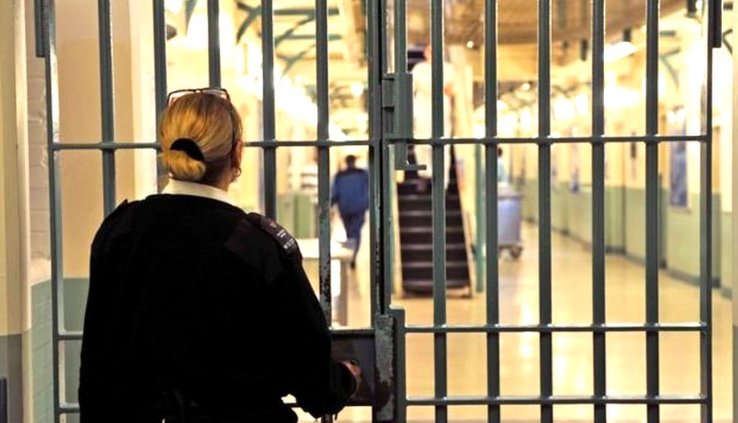Scotland’s prison population surged to a new record of 8,430 inmates on October 21, 2025, topping the previous peak from 2012 and straining the entire system. This crisis unfolds amid rising long-term sentences and persistent overcrowding, prompting urgent calls from officials for action to protect staff and prisoners alike.
Record-Breaking Numbers Exceed Capacity
The Scottish Prison Service reported that the number of people behind bars hit 8,430 last Tuesday, with figures staying above 8,400 for the full week. Prisons across the country, built to hold just 7,805 individuals, now house more than 600 extra people. This overflow equals the size of a whole facility like HMP Grampian in the north east.
Experts note that daily fluctuations make exact counts tricky, but the trend shows no signs of slowing. For context, the population stood at around 6,108 just before major early release efforts kicked in earlier this year. Now, with remand prisoners making up about 26 percent of the total, or roughly 2,180 people awaiting trial, the pressure builds even faster.

Drivers of the Prison Population Surge
Several factors fuel this sharp increase in Scotland’s prison numbers. One big driver is the jump in long-term sentences of four years or more, now at 4,012 inmates, which is over 600 higher than two years back. Courts seem to hand out longer terms more often, especially for serious offenses, leading to fewer releases and more stays.
In contrast, short-term prisoner counts have dipped by about 130 over the same period. Yet, the overall rise persists due to a steady influx of new commitments and slower court processing times. Recent data also points to a backlog of over 10,000 arrest warrants for crimes like murder and rape, which could add even more people once enforced.
Here are the main reasons behind the surge:
- Increased long-term sentencing for violent and serious crimes.
- High remand rates, with many held pre-trial amid court delays.
- Growing complexity of inmates, including more with mental health needs.
- Limited community alternatives, pushing more cases toward custody.
This mix creates a perfect storm, as officials scramble to manage a population that has grown 14 percent since early 2023.
Early Release Measures and Their Limits
To combat overcrowding, Scotland rolled out the Prisoners Early Release Scotland Act 2025, shifting release for short-term inmates from 50 percent to 40 percent of their sentence. This change helped ease some strain, but numbers kept climbing. Back in February and March, over 300 prisoners went free early, with half serving time for violent offenses, after warnings that jails could not accept more arrivals.
More than 120 others now serve under home detention curfews in the community. The latest move expands this program, letting eligible inmates out after just 15 percent of their sentence and extending stays up to 210 days. Still, Justice Secretary Angela Constance admits these steps offer only short-term relief, as the population hit records despite them.
Critics argue that repeated early releases undermine public safety and fail to fix root issues. One recent scheme plans to let about 400 more go by year’s end, but opposition voices call it a desperate patch on a broken system.
Safety Concerns for Inmates and Staff
Overcrowding takes a heavy toll on everyone inside Scotland’s prisons. The Scottish Prison Service warns that current levels raise very serious concerns about keeping inmates safe, with staff struggling to maintain order and support rehab programs. Relationships between officers and prisoners suffer, cutting chances for reform and raising reoffending risks.
HM Chief Inspector of Prisons for Scotland, Sara Snell, described a system grappling with numbers far beyond design limits, leading to stress on governors and a long-term drain on morale. Attacks and tensions have risen in some spots, like ongoing gang issues that force constant separation efforts.
In one stark example, inspectors found HMP Barlinnie, the largest jail, in a wretchedly poor state while running 30 percent over capacity. This not only harms those locked up but also endangers workers, who face burnout from the endless pressure.
To illustrate the breakdown, here’s a table showing key population segments as of late October 2025:
| Category | Number of Inmates | Change from 2 Years Ago | Percentage of Total |
|---|---|---|---|
| Long-term (4+ years) | 4,012 | +600 | 48% |
| Short-term | ~3,500 | -130 | 42% |
| Remand | 2,180 | Stable | 26% |
| On Home Detention | 120+ | Increasing | N/A |
These figures highlight how long-term stays dominate the crisis.
Government’s Response and Long-Term Plans
The Scottish government now pushes for immediate action to safeguard prisons and communities. Officials point to a range of steps, from optimizing curfews to planning more releases if needed under emergency powers. Yet, building new facilities lags far behind, with HMP Glasgow pushed to 2028 at a cost nearing one billion pounds, and HMP Highland delayed to 2027 after ballooning to 209 million.
An independent Sentencing and Penal Policy Commission wraps up by year’s end, aiming to rethink how custody and community options balance out. This could lead to smarter use of non-jail punishments and better bail decisions. For now, though, the focus stays on quick fixes amid a UK-wide issue, where England and Wales also battle high numbers.
Tying into broader trends, Scotland’s rate of 147 prisoners per 100,000 people outpaces many European neighbors, sparking debates on whether tougher policies or social fixes like mental health support hold the key.
As Scotland grapples with this prison overcrowding crisis, readers can help spread awareness by sharing their thoughts in the comments below. What solutions do you see working best, and how should leaders prioritize safety for all involved?


















